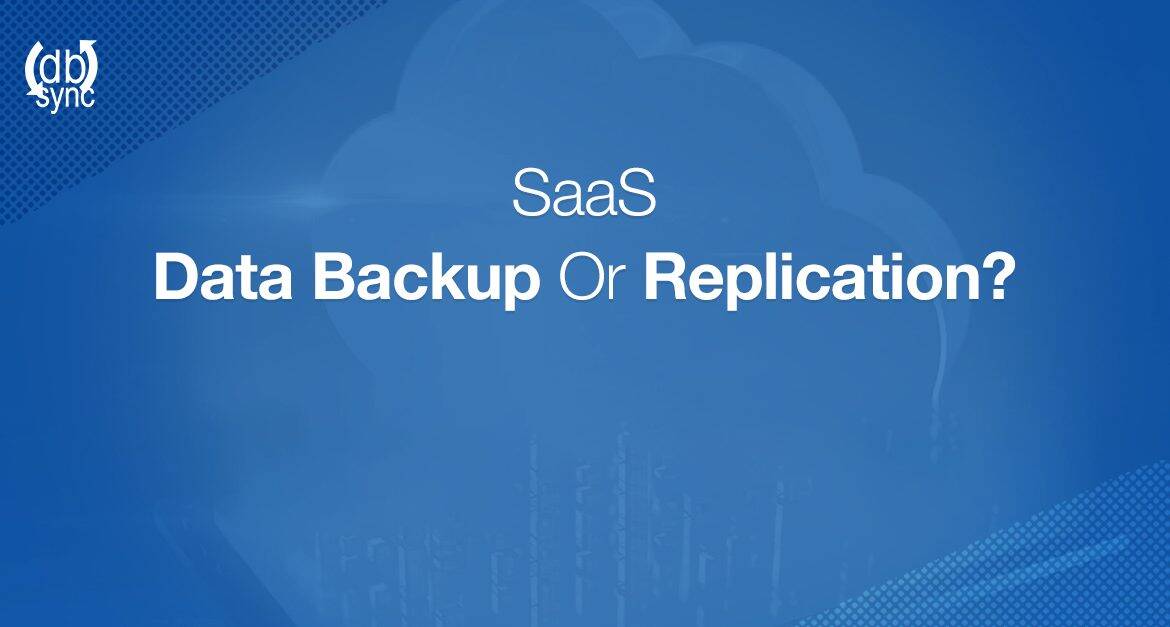When to Use SaaS Data Backup vs Replication

As SaaS data management solutions evolve to meet the market’s growing data management and data endpoint needs, the lines are becoming blurred between SaaS backup and replication. The following summarizes the typical SaaS backup and replication features that you are likely to encounter on the market and where these lines become blurred.
Some of the reasons for the market’s evolving needs include the movement towards digitizing businesses, reflected in the increases of SaaS and cloud adoption, along with increasingly ambitious business continuity goals and more demanding regulations. Some key data goals may include:
- Optimizing DataOps and DevOps time and resources
- Creating a unified view of the companies data and customers
- Seeding data lakes and warehouses for analysis
- Meeting privacy regulations
- Meeting financial regulations
- Meeting business continuity RTO and RPO goals
- Project-specific goals such as migrations and enhancing systems
SaaS Backup Solutions: What to Expect
SaaS backup solutions provide DataOps with a tool that will automate their backups and make it easy for them to recover their data, metadata, and other assets such as files. A non-technical user should be reasonably comfortable navigating the solution. The main goals of the backup app are to meet compliance, audit, and business continuity goals. The data’s endpoints are usually limited to a public or private cloud, necessitating a replication solution should the company need an on-premise self-hosted solution. What you will typically find as features:
- Scheduled/automated daily backups of data, metadata, and other assets such as files
- Reporting to indicate changes between backups
- Comparison tools to investigate changes
- An audit trail to validate compliance
- “Forget Me” tools to meet privacy regulations
- The ability to easily and quickly recover data from the backups to meet your RTO goals
When the Lines Blur Between SaaS Data Backup and Replication
The lines become blurred between commercially available products (backup and replication) when the demand for the frequency of backups increases, additional data endpoints are needed or data use becomes more diverse. Unfortunately, this sometimes requires a bit of digging and doesn’t always yield a perfect vendor-to-vendor comparison which may include charges for additional data storage and API calls. The following section will highlight the typical replication features available commercially.
[download DBSync’s Salesforce data backup and replication comparison]
SaaS Replication Solutions: What to Expect
As your data usage or endpoints needed become more complex, the products you will find more useful become SaaS data replication solutions.
When you want to do more with your data than back it up, then you will be drawn to SaaS data replication solutions. These may be additional features from SaaS data backup providers or a unique product line from a SaaS data management company. The solution helps to get the right data to the right business unit, regardless of geography, reliably and consistently. What does that mean?
Similar to backups, replicating SaaS data can ensure that, if one system fails, data can easily be recovered from another location. With data replication, it can also reduce your RTO since the data can be replicated to a local server. Replication can certainly boost your ability to meet business continuity goals and regulatory mandates, but, because of those additional endpoints and automated schema updates, it can do much more. SaaS data replication solution can power a companies analysis by populating data lakes and warehouses on a frequency of your choosing. It also finds application in enhancing or testing system performance to help with IT decision-making. These are some of the typical feature you can expect to find.
- Flexible frequency and scheduling
- Multiple endpoints (SQL, NoSQL, public cloud, private cloud and on-premise)
- Sandbox replication
- Automated schema updates
- Choice of run modes
- Enhancements through additional APIs
- Integration with data workflows (connectors)
Discover which set of data management tools work best for you and your company.
Download DBsync’s Salesforce data backup and replication solutions comparison.
